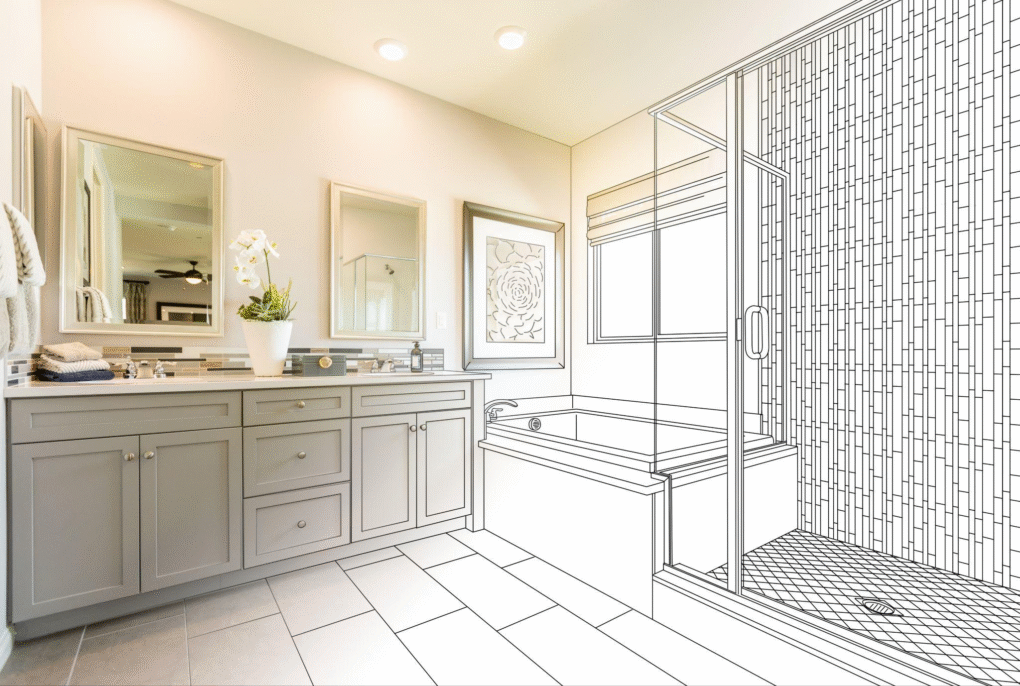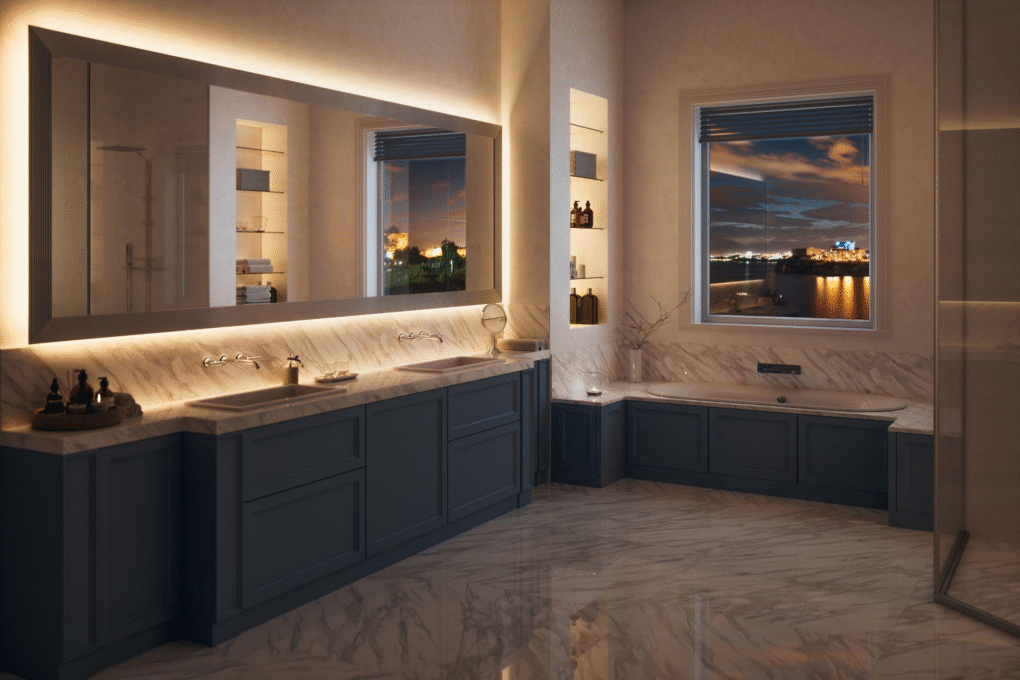Bathroom remodeling can transform your space, but avoiding common mistakes is key to success. Start by creating a detailed plan to prevent costly errors and provide functionality. Stick to your budget, address ventilation and plumbing needs, and prioritize practicality over aesthetics. Partnering with experienced professionals can streamline the process and deliver high-quality results. By focusing on these areas, you can achieve a bathroom renovation that combines style, efficiency, and long-term value.

Table of Contents
- Why Planning is Crucial in Bathroom Remodeling
- How to Avoid Budget Overruns in Your Renovation
- The Role of Ventilation and Plumbing in Bathroom Design
- Balancing Style and Functionality in Your Bathroom
- Final Thoughts: How Professional Contractors Secure Success
Renovating a bathroom is an exciting opportunity to enhance both functionality and aesthetics in your home. However, many homeowners face challenges during the process due to overlooked details or poor planning. Mistakes like inadequate ventilation, poor budget management, or prioritizing style over practicality can lead to costly repairs and dissatisfaction down the line.
A well-executed bathroom remodeling project requires careful consideration of key factors, from layout design to material selection. For those navigating this complex process, partnering with a professional contractor can make all the difference. A clear process with professional contractor minimizes errors and promotes efficiency, ensuring your renovation aligns with your vision and needs. Understanding common pitfalls and how to avoid them sets the stage for a successful transformation of your bathroom space.
Why Planning is Crucial in Bathroom Remodeling
Planning is the foundation of any successful bathroom remodeling project. Without a clear roadmap, even minor oversights can lead to significant delays, budget overruns, or unsatisfactory results. A well-thought-out plan not only outlines the scope of work but also anticipates potential challenges, securing a smoother process from start to finish.
- Define Your Goals. Identify the primary purpose of the renovation – whether it’s improving functionality, increasing storage, or enhancing aesthetics.
- Create a Layout. Optimize the use of space by considering the placement of fixtures like the shower, toilet, and sink. A functional layout improves daily convenience.
- Set a Realistic Budget. Account for materials, labor, and unexpected expenses to avoid financial strain during the project.
Skipping the planning stage often leads to costly mistakes, such as incorrect measurements or mismatched fixtures. By dedicating time to this step, you establish a strong foundation for your renovation, paving the way for a successful outcome.
How to Avoid Budget Overruns in Your Renovation
Staying within budget is a common concern for homeowners embarking on a bathroom remodeling project. Without proper preparation, unexpected costs can quickly spiral out of control, leading to stress and financial strain. Fortunately, there are practical steps you can take to manage expenses effectively and keep your project on track.
1. Start with a Detailed Budget Plan
A comprehensive budget is the cornerstone of any successful renovation. Break down costs into categories such as materials, labor, and permits. Include estimates for both essential items and optional upgrades to create a clear financial roadmap.
2. Account for Hidden Costs
Unexpected issues, like plumbing repairs or electrical updates, are common in bathroom renovations. Allocate an additional 10–15% of your total budget as a contingency fund to address these surprises without derailing your finances.
3. Prioritize Functional Upgrades
Focus on elements that add long-term value, such as energy-efficient fixtures or proper waterproofing, before investing in decorative features. This approach helps you allocate resources wisely while maintaining a balance between cost and quality.
4. Research and Compare Prices
Take time to explore options for tiles, fixtures, and other materials. Shopping around and comparing prices guarantees you get the best value without compromising on quality.
By implementing these strategies, you promote financial stability throughout your renovation journey. With budgeting under control, the next step is addressing the technical aspects of your project: ventilation and plumbing needs.
The Role of Ventilation and Plumbing in Bathroom Design
Ventilation and plumbing are often overlooked in bathroom remodeling, yet they play a vital role in the functionality and longevity of your space. Ignoring these elements can lead to issues like mold growth, water damage, or poor airflow, which compromise both comfort and structural integrity. Addressing them early in the process is key to a successful renovation.
Why Ventilation Matters
Proper ventilation prevents moisture buildup, which can cause mold, mildew, and peeling paint. Without adequate airflow, even the most beautifully designed bathroom can become uncomfortable and hazardous over time.
- Install an exhaust fan that matches the size of your bathroom for optimal performance.
- Consider adding a window or skylight to enhance natural airflow and light.
Plumbing Considerations
Plumbing is the backbone of your bathroom’s functionality, and neglecting it can result in leaks, water damage, or inefficient water flow.
- Inspect existing pipes for signs of wear or corrosion before starting the renovation.
- Position fixtures like sinks, showers, and toilets to minimize complex plumbing adjustments.
Long-Term Benefits
Investing in quality ventilation and plumbing systems reduces maintenance costs and enhances the overall usability of your bathroom. These elements work together to create a space that is not only visually appealing but also durable and practical.
By addressing ventilation and plumbing needs upfront, you pave the way for a renovation that combines style with reliability.
Balancing Style and Functionality in Your Bathroom

Creating a bathroom that is both stylish and functional requires thoughtful decision-making. According to Zillow, a well-executed bathroom remodel can significantly boost your home’s appeal and market value.
While aesthetics are important, prioritizing design over practicality can lead to a space that looks good but fails to meet your everyday needs. Striking the right balance supports a bathroom that is visually appealing, comfortable, and efficient for daily use.
1. Start with Functional Design Choices
The foundation of a successful bathroom lies in its functionality. Focus on elements that enhance usability before considering decorative features.
- Choose fixtures like sinks, showers, and storage solutions that align with your lifestyle. For example, a double vanity may better support busy households. As a pro tip, explore bathroom vanity ideas to help balance function and style, making sure your choices are both practical and tailored to your lifestyle while enhancing the overall design.
- Opt for non-slip flooring materials to promote safety without sacrificing style.
2. Incorporate Aesthetic Elements Thoughtfully
Once the functional aspects are addressed, you can layer in design elements that reflect your personal taste.
- Use color schemes and lighting to create a welcoming atmosphere. Neutral tones paired with warm lighting often work well in bathrooms.
- Add decorative touches like artwork, plants, or unique hardware to infuse personality into the space.
3. Avoid Overloading on Trends
While trendy designs may seem appealing, they can quickly become outdated. Instead, focus on timeless features that maintain their appeal over the years.
- Combine classic materials like marble or subway tiles with modern accents for a balanced look.
- Limit bold patterns or colors to small areas, such as an accent wall or backsplash, to avoid overwhelming the space.
4. Test for Practicality
Before finalizing your design, evaluate how each element contributes to the overall usability of the bathroom.
- Verify there’s enough storage for toiletries and cleaning supplies to prevent clutter.
- Confirm that all fixtures are easy to access and operate, supporting convenience for users of all ages.
A well-designed bathroom harmonizes beauty and practicality, creating a space that feels inviting and serves its purpose effectively.
Final Thoughts: How Professional Contractors Secure Success
Partnering with a professional contractor can significantly simplify the bathroom remodeling process. Their expertise in handling complex tasks like plumbing, ventilation, and design ensures precision while minimizing errors. Beyond technical skills, they bring valuable insights into material selection and layout planning, helping you achieve a balance of style and functionality.
For homeowners, this support translates into peace of mind and long-term satisfaction. By addressing potential challenges early and delivering reliable results, professional contractors help create a bathroom that is both practical and visually appealing. With careful planning and expert guidance, your bathroom remodeling project can transform your space into one that meets your needs and enhances your home’s value.
